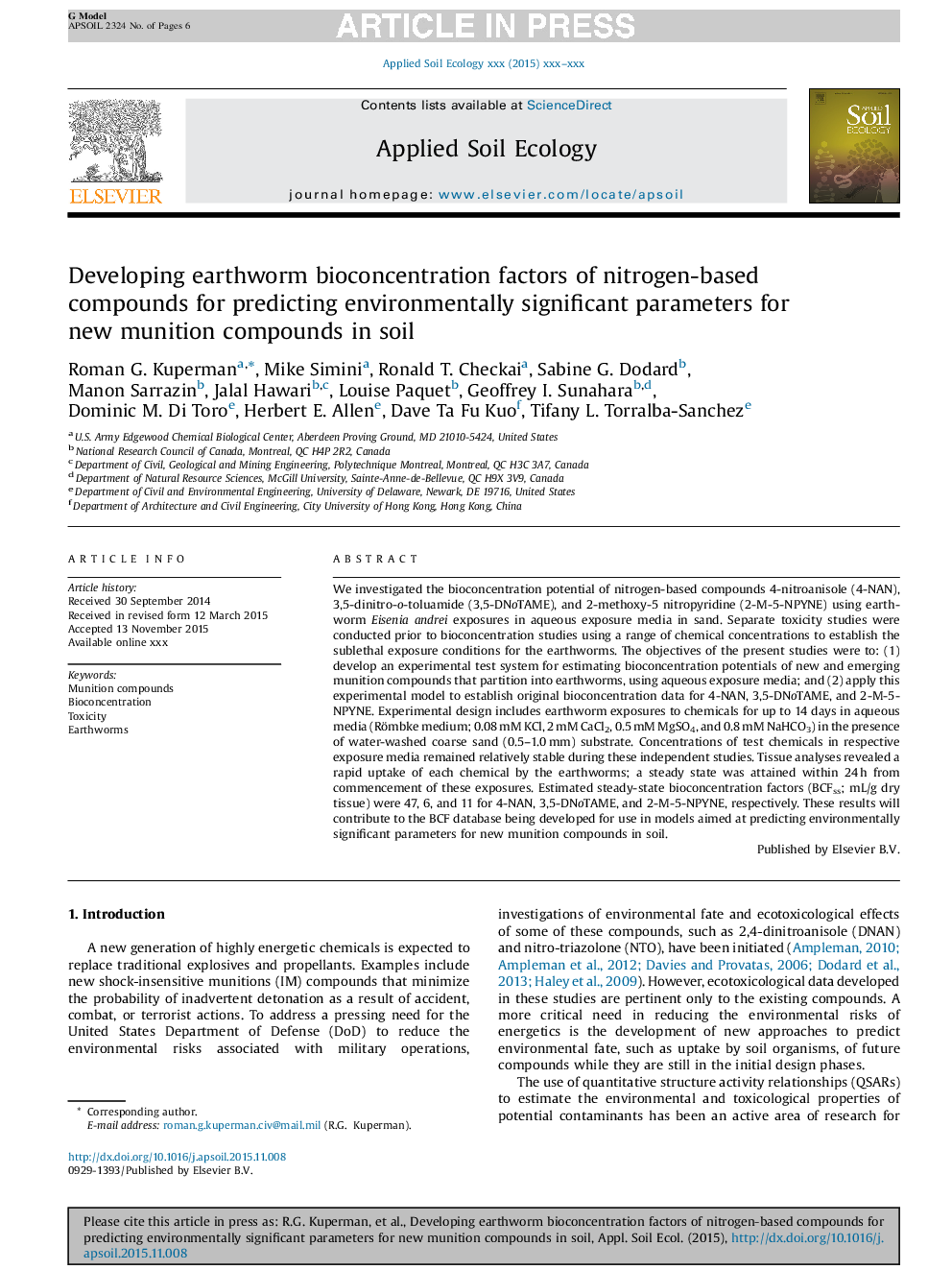| Article ID | Journal | Published Year | Pages | File Type |
|---|---|---|---|---|
| 6297522 | Applied Soil Ecology | 2016 | 6 Pages |
Abstract
We investigated the bioconcentration potential of nitrogen-based compounds 4-nitroanisole (4-NAN), 3,5-dinitro-o-toluamide (3,5-DNoTAME), and 2-methoxy-5 nitropyridine (2-M-5-NPYNE) using earthworm Eisenia andrei exposures in aqueous exposure media in sand. Separate toxicity studies were conducted prior to bioconcentration studies using a range of chemical concentrations to establish the sublethal exposure conditions for the earthworms. The objectives of the present studies were to: (1) develop an experimental test system for estimating bioconcentration potentials of new and emerging munition compounds that partition into earthworms, using aqueous exposure media; and (2) apply this experimental model to establish original bioconcentration data for 4-NAN, 3,5-DNoTAME, and 2-M-5-NPYNE. Experimental design includes earthworm exposures to chemicals for up to 14 days in aqueous media (Römbke medium; 0.08Â mM KCl, 2Â mM CaCl2, 0.5Â mM MgSO4, and 0.8Â mM NaHCO3) in the presence of water-washed coarse sand (0.5-1.0Â mm) substrate. Concentrations of test chemicals in respective exposure media remained relatively stable during these independent studies. Tissue analyses revealed a rapid uptake of each chemical by the earthworms; a steady state was attained within 24Â h from commencement of these exposures. Estimated steady-state bioconcentration factors (BCFss; mL/g dry tissue) were 47, 6, and 11 for 4-NAN, 3,5-DNoTAME, and 2-M-5-NPYNE, respectively. These results will contribute to the BCF database being developed for use in models aimed at predicting environmentally significant parameters for new munition compounds in soil.
Keywords
Related Topics
Life Sciences
Agricultural and Biological Sciences
Ecology, Evolution, Behavior and Systematics
Authors
Roman G. Kuperman, Mike Simini, Ronald T. Checkai, Sabine G. Dodard, Manon Sarrazin, Jalal Hawari, Louise Paquet, Geoffrey I. Sunahara, Dominic M. Di Toro, Herbert E. Allen, Dave Ta Fu Kuo, Tifany L. Torralba-Sanchez,
